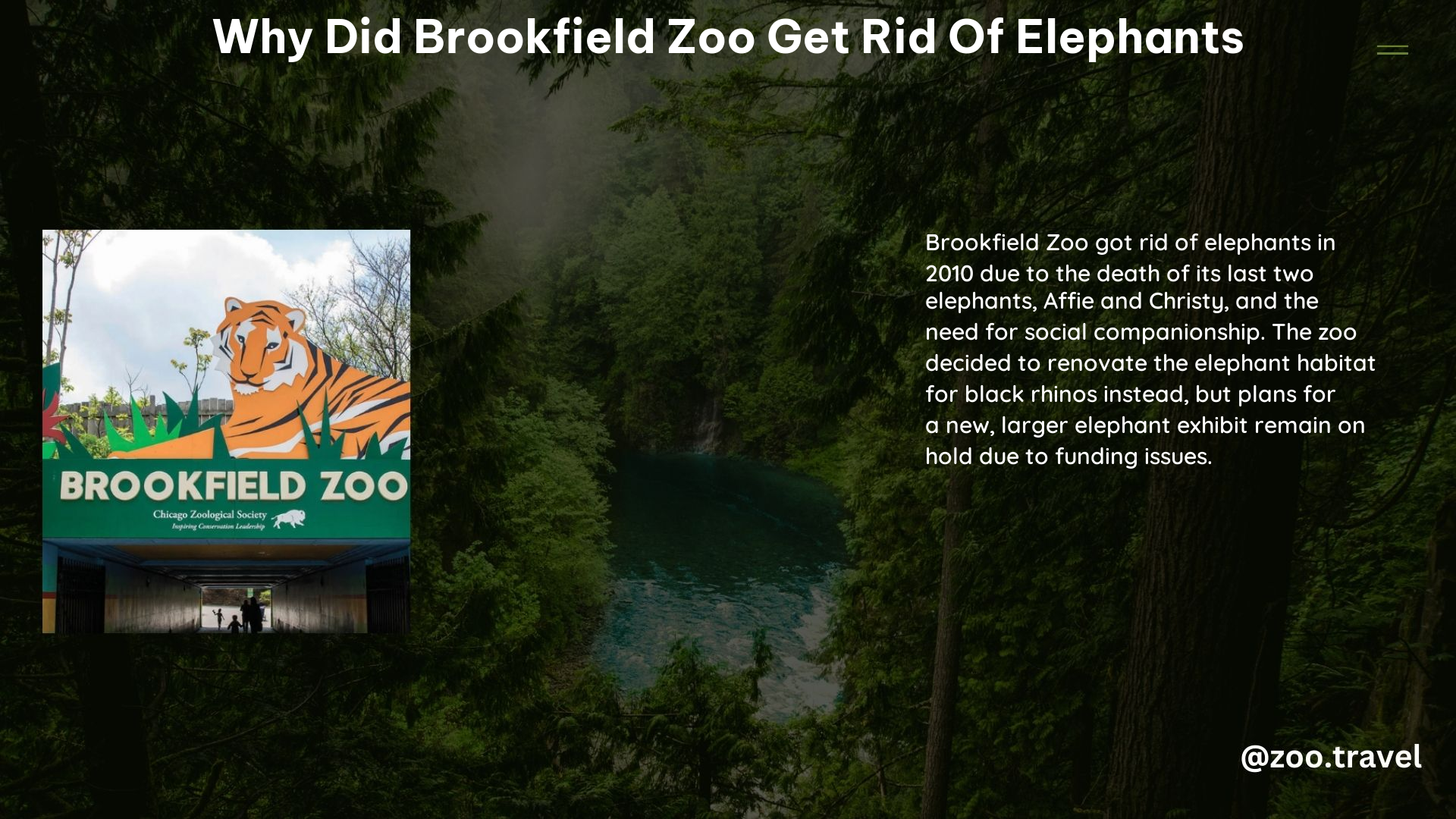Brookfield Zoo, a renowned zoological park located in Illinois, made the decision to phase out its elephant exhibit in 2010. This decision was not taken lightly, as it involved several factors that ultimately led to the zoo’s choice to remove these majestic creatures from their grounds. In this blog post, we’ll explore the reasons behind Brookfield Zoo’s decision to get rid of elephants.
Social Needs of Elephants
Elephants are highly social animals that thrive in the company of their own kind. After the passing of Christy, an African elephant, in 2009, the remaining elephant, Joyce, was left alone. The zoo recognized that this was not an ideal situation for Joyce’s well-being, as elephants require companionship to maintain their emotional and psychological health. To ensure Joyce’s well-being, the zoo decided to send her back to Six Flags Discovery Kingdom in California, where she could be with other elephants.
Renovation Plans and Resource Allocation

The zoo had proposed a $30 million renovation of the entire elephant habitat area, which would have provided a much larger and more suitable space for the animals. However, this plan was not yet implemented, and the zoo did not have the resources to maintain the current exhibit. Maintaining an elephant exhibit is a costly and resource-intensive endeavor, and the zoo may have decided to reallocate those resources to other exhibits or projects, leading to the decision to phase out the elephants.
Animal Welfare Considerations
The welfare of the animals was a top priority for Brookfield Zoo. The zoo recognized that the current exhibit was not providing the best possible environment for the elephants, and they wanted to ensure that the animals had access to a more suitable habitat. By phasing out the elephants, the zoo could focus on creating a better habitat for future elephant residents, should they decide to reintroduce the species to their zoo.
Shift in Exhibit Focus
It’s possible that Brookfield Zoo’s decision to phase out the elephants was also influenced by a shift in the zoo’s focus. The zoo may have decided to prioritize other species, such as the black rhinos, which were housed in the former elephant exhibit. This change in focus could have contributed to the decision to remove the elephants from the zoo.
Factors Considered in the Decision
When making the decision to phase out the elephants, Brookfield Zoo likely considered a variety of factors, including:
- Social Needs: Ensuring the elephants had the necessary companionship and social interactions to maintain their well-being.
- Habitat Suitability: Evaluating the current exhibit and determining if it was providing the best possible environment for the elephants.
- Renovation Plans: Assessing the feasibility and timeline of the proposed $30 million renovation to the elephant habitat.
- Resource Allocation: Weighing the costs and resources required to maintain the elephant exhibit against the potential benefits to the zoo and its visitors.
- Shift in Exhibit Focus: Considering the zoo’s overall strategic direction and the potential impact of prioritizing other species over the elephants.
By carefully considering these factors, Brookfield Zoo made the decision to phase out its elephant exhibit, with the goal of ensuring the best possible outcome for the animals and the zoo as a whole.
Conclusion
The decision to phase out the elephants at Brookfield Zoo was a complex one, involving a variety of factors that ultimately led to the zoo’s choice to remove these majestic creatures from their grounds. While the loss of the elephant exhibit may have been disappointing for some visitors, the zoo’s commitment to animal welfare and responsible resource allocation was the driving force behind this decision. As zoos continue to evolve and adapt to the changing needs of both animals and visitors, it’s important to understand the nuanced considerations that go into such decisions.
Reference:
– Brookfield Zoo Phases Out Elephant Exhibit
– Brookfield Zoo’s Elephant Exhibit Closure
